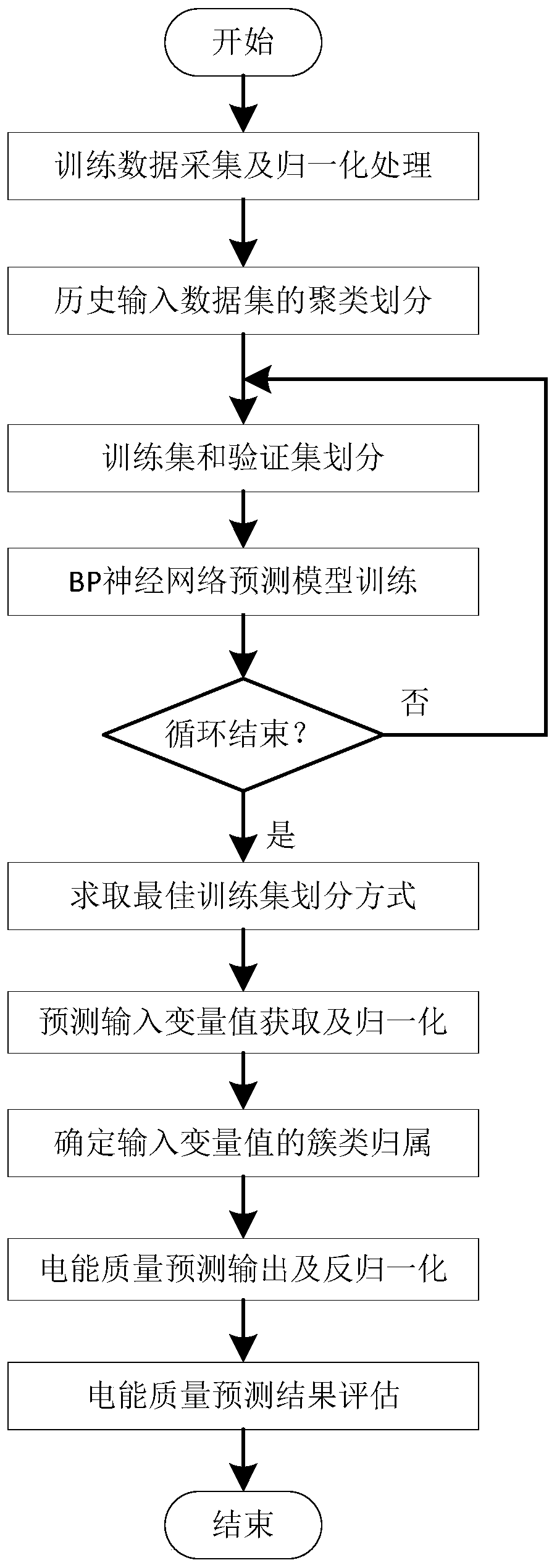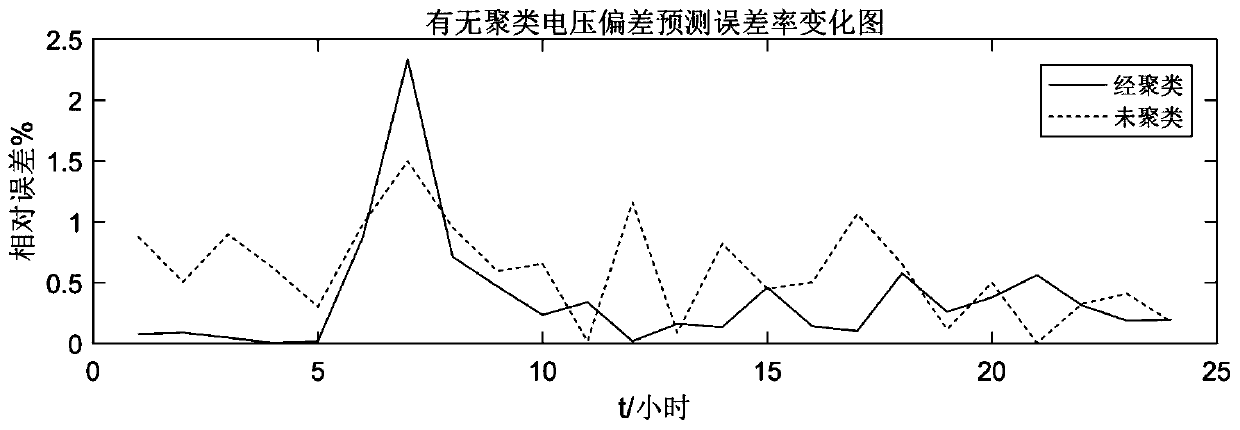Clustering and neural network-based power quality prediction method for a power distribution network containing a distributed power supply
A technology of distributed power supply and power quality, applied in the fields of electrical engineering and power quality, to achieve the effect of accurate and reliable prediction results
- Summary
- Abstract
- Description
- Claims
- Application Information
AI Technical Summary
Problems solved by technology
Method used
Image
Examples
Embodiment Construction
[0067] The present invention will be further described in detail below in conjunction with the embodiments and accompanying drawings, but the embodiments of the present invention are not limited thereto. The overall block diagram of the DG distribution network power quality clustering and prediction method in the embodiment is shown in the attached figure 1 As shown, the present invention proposes a method for predicting the power quality of distribution networks with distributed power sources based on clustering and neural networks, including the following steps:
[0068] 1. Training data collection and normalization processing: In order to obtain predictive performance with high enough accuracy, it is necessary to provide the predictive model with sufficiently wide and large enough training data; Data collection of quality index items and their influencing factors, and then read the collected data as a historical data set and perform normalization operation;
[0069] Step ...
PUM
 Login to View More
Login to View More Abstract
Description
Claims
Application Information
 Login to View More
Login to View More - R&D
- Intellectual Property
- Life Sciences
- Materials
- Tech Scout
- Unparalleled Data Quality
- Higher Quality Content
- 60% Fewer Hallucinations
Browse by: Latest US Patents, China's latest patents, Technical Efficacy Thesaurus, Application Domain, Technology Topic, Popular Technical Reports.
© 2025 PatSnap. All rights reserved.Legal|Privacy policy|Modern Slavery Act Transparency Statement|Sitemap|About US| Contact US: help@patsnap.com



